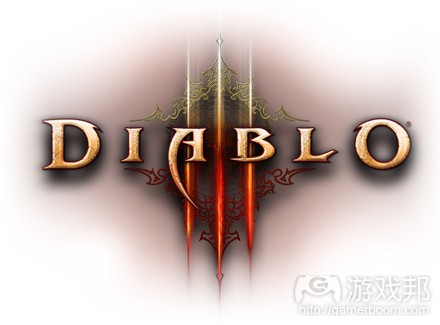《暗黑破坏神III》中战利品的心理分析(一)
作者:Jamie Madigan
最近,我一直在玩《暗黑破坏神III》。我敢保证你们中许多玩过这款游戏的人都和我一样,反复经历着同样的情景。在奔跑着避免AOE攻击,急匆匆地去拯救队友,并打击暴徒后,你和你的同伴将耗尽最终boss的生命值并立即收集最新创造的数字尸体去回答所有重要的问题:是否会掉落一些很棒的东西?
在一些最重要的方面上,《暗黑破坏神III》是一款关于使用武器打击怪物的游戏,并且玩家能够通过死去的怪物获得更棒的武器。也就是说,这是一款你尝试着通过结合角色的技能和装备而最大化系统输出内容的游戏。基于同样授权的早前游戏通过设置拍卖行让玩家能够出售并购买装备使得杀死某人不再是玩家唯一的目标而进一步复杂化了这一过程。
我曾经思考过各种能够解释我们想要在拍卖行中购买东西并不断刷道具的不同心理理论。游戏开发商暴雪可能拥有两个目标:首先便是让人们去花费他们在游戏中的金币以保持游戏竞技的发展(游戏邦注:或在真钱拍卖行中花真钱),其次便是保持玩家反复游戏,基于早旧的方式去寻找物品。为了追逐这些目标,基于已建立的心理现象,我想给暴雪(或其它正在开发类似系统的开发者)提供3个建议。比起一次性解决所有问题,我将这些内容分成3篇文章进行分析。
首先让我们着眼于暴雪是如何通过在拍卖行中涨价以保持金钱在不同经济部分的运转。
一开始先考虑这两个问题:
1.最高的红杉的高度是否超过1200英尺?
2.关于最高红杉的高度你的最佳猜想是什么吗?
你怎么想?这些问题是旧金山探索馆中的研究者向某些访问者所询问的问题。其他访问者也被问到了类似的问题,除了第一个访问者被问到最高红杉的高度是否超过180英尺,而不受1200英尺。
这些限制都很极端,180英尺显然对于最高的红杉太说太矮了,而1200英尺又太高了。然而,第二个问题的答案(在两个群组中是一致的)却很惊人。一般说来,那些被1200英尺这一数值所引导的人们会说在森林中最高的树是844英尺,而那些听到180英尺的人们会觉得最高的树只有282英尺。这其实都是一些随机的访问者面对着同样的树,这两个群组所具有的不同便是在一开始所遇到的问题中的数值。
如果锚定是无意义或随机的,它们也仍然带有效果。行为经济学家Dan Ariely及其同事组织了一次研究,在这里他们使用了拍卖中的锚定原理,即让投标人在他们的竞标单上写下其社会安全码的最后两个数字。那些数字末尾为80s或以上的人将愿意支付多达346%的费用给酒或巧克力等商品,这将远高于那些数字末尾为20s或以下的人。
这也是我为何认为如过暴雪想要玩家花更多钱于拍卖行中,他们就需要预先为一口价分类,从而让我们能在最初搜索结果中看到较大的数值。看到较大的数值能够让我们提升道具对我们的价值的估算值。如果暴雪真的想要做好这点,该公司本可以呈现给你们一款已经卖了7天以上的道具。
当然了,精明的拍卖行购物者可以使用这一信息去避免锚定效应。在拍卖行过滤器中设定价格限制将缓和这种情况。我通常采取的做法便是基于过滤工具设定价格限制,然后通过上升的价格而不是下降的价格进行分类。基于该方式,我可以瞄准较低的价格。
但是通过刷任务(早旧的方式)获得战利品会怎样?这些内容将在第2篇文章中介绍,或者你们可以直接跳到第3部分关于拍卖行对于多巴胺冲击和战利品追逐的影响的讨论中。而最后,也就是附加的第4篇文章将是关于拍卖行价格中的道具历史的影响。
(本文为游戏邦/gamerboom.com编译,拒绝任何不保留版权的转功,如需转载请联系:游戏邦)
The Psychology of Diablo III Loot Part 1: Anchoring the Auction House
Jamie Madigan
Oh man, you all, I’ve been playing a LOT of Diablo III lately.1 I’m sure that many of you who have played have been through the same scenario I have time after time. After running around avoiding AOE attacks, dashing in to rez fallen teammates, and swatting aside trash mobs, you and your co-players finally deplete some end boss’s health and immediately gather around the newly created digital corpse to answer that all-important question: did anything good drop?
In some of the most important ways, Diablo III is a game about hitting monsters with weapons until other, hopefully better, weapons pop out of them. That is, it’s a game where you try to maximize the outputs of a system through optimal combinations of your character’s skills and equipment. This puts acquiring new gear first and foremost2 but unlike previous games in the franchise this one complicates that process by having auction houses where you can buy and sell equipment so that killing stuff isn’t the only way to deck yourself out with phat lewts.
As is my habit I’ve been thinking about how different psychological theories explain our willingness to buy things in the auction house and grind for new equipment from in-game drops. The game’s developer, Blizzard, probably has two goals among others: one, to get people to spend their in-game gold to keep the game’s economy moving (or real money in the real money auction house), and two to keep us playing the game over and over again in order to find stuff the old fashioned way. In pursuit of these goals, I have three suggestions for Blizzard (or anyone else developing a similar system) based on well established psychological phenomena. Instead of dumping everything at once, I’ve split things into a series of three articles, the first of which follows.
Let’s look first at how Blizzard can inflate prices in the auction house to keep money moving through that part of the conomy.
To start, consider these two questions:
1. Is the height of the tallest redwood more or less than 1,200 feet?
2. What is your best guess about the height of the tallest redwood?
What do you think? These are questions that researchers asked of some visitors to the San Francisco Exploratorium. Other visitors were asked a similar pair of questions, except that the first one asked whether the tallest redwood was more than 180 feet instead of 1,200.
Both limits are pretty extreme, in that 180 feet is obviously way too short for the tallest redwood and 1,200 feet is crazy tall. Nonetheless, the answers to the second question, which was consistent across both groups, were pretty amazing. On average, those who had been primed by the 1,200 feet figure said the tallest tree in the forest had to be 844 feet, while those who heard 180 feet off the bat thought the tallest had to be only 282 feet. These were all random visitors looking at the same trees; the only difference between the two groups was the figure in that first question.
This is a clear cut example of what psychologists call “anchoring,” one example of which is presenting us with a number to change our estimates of an other, possibly unrelated number. Simply seeing the numbers 1,200 or 180 caused people to anchor on that number and to then adjust their estimates of the tallest tree instead of picking a more sensible starting point. This kind of effect shows up everywhere once you know to look for it. It’s the basis of lowball sales pitches that get you to anchor on a low price and then negotiate up. It’s the reason why many fast food restaurants list bigger, more expensive drink prices first on their menu. It’s why the “But wait! There’s more!” brand of infomercials list absurdly high prices for their wares first before slashing them down for a limited time if you act now.
And anchors can still have an effect if they’re nonsensical or random. Behavioral economist Dan Ariely and his colleagues conducted a study4 where they used anchoring in an auction simply by having bidders write down the last two digits of their social security number at the top of their bid sheets. Those whose numbers ended in the 80s and above actually were willing to pay up to 346% more for things like wine and chocolates than were those whose social security numbers ended in the 20s or below.
This is why I think that if Blizzard wants more money spent in the auction houses, one way to effect this is to pre-sort the buyout prices so that we see the big fat numbers first in our search results. Even absurd ones like where that one numbskull obviously just held down the “9” key for 30 seconds. Seeing larger numbers will prime us to inflate our estimates of what that item is worth to us. If Blizzard wanted to get really sly about it, the company could show you the most that an item5 has sold for over the last 7 days.
Of course, savvy auction house shoppers can use this information to avoid the anchoring effect. Setting price limits in the auction house filters would mitigate it, for example. Me, what I typically do is set some price limits with the filtering tools, then sort by ascending price rather than descending. That way, I anchor on the low prices instead.
But what about getting loot the old fashioned way –by grinding for it? Read about that in part 2, or skip ahead to a discussion of what effects the auction houses have on dopamine rushes and loot hunting in part 3. Finally, there’s a bonus part 4 about the effect of item history on auction house prices.(source:psychologyofgames)
上一篇:Robert Green:从六个角度评述一款免费游戏
下一篇:在想出一个理念前就开始创造游戏









































 闽公网安备35020302001549号
闽公网安备35020302001549号